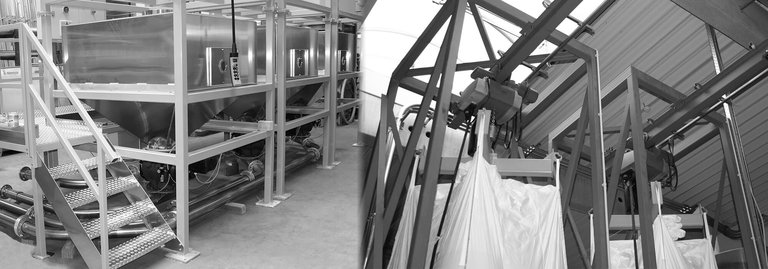

In the plastics industry, big bags are used to stock raw materials as well as for the internal transport of a wide range of bulk materials, including granules, regranules, regrind, flakes or powder.
We offer a comprehensive system for emptying and filling big bags in consideration of the individual bulk solid characteristics – be it for the storage or discharge for free-flowing, partially flowing or poorly flowing bulk materials.
Our modular system covers almost all applications that are commonly used in the plastics industry. The modular design offers numerous combination possibilities and options for the individual configuration of your application. The examples shown on this website are only a few of the configuration possibilities available.
When 25-tonne big bags are delivered by truck, it is important to empty them quickly in order to reduce downtime for the trucks and to keep the logistics effort to a minimum. It is not desirable to spend time handling the big bags during emptying. We offer two solutions for this task, which are illustrated on the diagram. The first solution is to empty the big bag at once into a large container, or emptying can be allocated to two emptying stations with smaller containers. Conveying capacities of 10–18 tonnes/h are possible.
In many cases, the individual big bags are not as homogeneous as they should be. This is where our various homogenization silos come in, which already yield significant improvements in homogeneity in just a single pass.